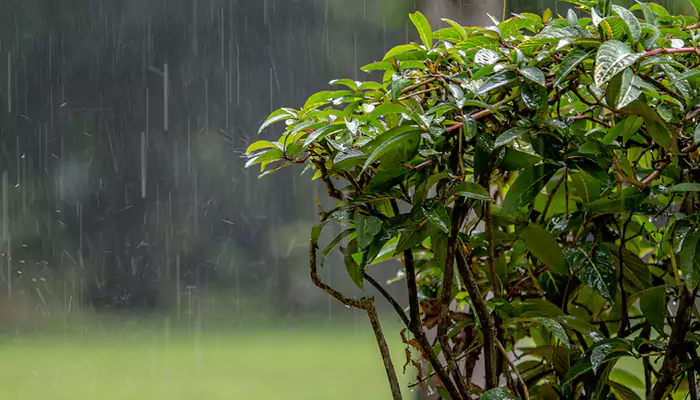Monsoon-Proofing Your Garden – Tips For Thriving Plants In Heavy Rains
When the monsoon season arrives, it brings a refreshing change from the scorching summer heat.
- Ishani Karmakar
- 12 June, 2024
- 2 mins ago

Monsoon-Proofing Your Garden – Tips For Thriving Plants In Heavy Rains
When the monsoon season arrives, it brings a refreshing change from the scorching summer heat.
The sight of raindrops falling and the smell of wet earth are enough to lift anyone's spirits. However, while the monsoon is a boon for gardens, it can also pose several challenges for gardeners. Heavy rains can lead to waterlogged soil, fungal diseases, and plant damage. But fear not! With a bit of preparation and care, you can ensure that your garden not only survives but thrives during the monsoon. Here are some essential tips for monsoon-proofing your garden.
Improve Soil Drainage
Good drainage is crucial for your garden during the monsoon. Waterlogged soil can suffocate plant roots and lead to root rot. To improve drainage, consider these steps:
Raised Beds: If you have a vegetable or flower garden, consider planting in raised beds. This elevates the plants above the waterlogged ground and helps excess water drain away.
Amend the Soil: Incorporate organic matter such as compost, peat moss, or sand into your soil to improve its structure and drainage capabilities. This will help water move more freely through the soil.
Mulching: Apply a layer of mulch around your plants. Mulch helps in retaining moisture, preventing soil erosion, and reducing the impact of heavy rains on the soil surface.
Prevent Fungal Diseases
The increased humidity and moisture during the monsoon create ideal conditions for fungal diseases. To protect your plants:
Proper Spacing: Ensure your plants are well-spaced to allow for good air circulation. This reduces humidity levels around the plants and helps prevent fungal growth.
Pruning: Trim any dead or diseased branches and leaves. This not only improves air circulation but also prevents the spread of diseases.
Fungicide: Use an organic fungicide as a preventive measure. Neem oil is an excellent natural option that helps in controlling fungal infections.
Water Management

While it might seem unnecessary to water your garden during the monsoon, managing water is still important:
Check Drainage Systems: Ensure that your garden’s drainage systems, such as gutters and downspouts, are clear and functioning properly. Blocked drainage can lead to water accumulation.
Rain Barrels: Consider installing rain barrels to collect and store rainwater. This not only helps in water conservation but also prevents water from pooling around your plants.
Irrigation Control: Turn off your irrigation systems during periods of heavy rain to prevent overwatering.
Protecting Delicate Plants
Some plants may need extra protection during heavy rains:
Temporary Shelters: Use temporary shelters like cloches or plastic covers to protect delicate plants from being battered by heavy rains.
Staking and Support: Tall or top-heavy plants may need staking or other support to prevent them from being knocked over by strong winds and rain.
Soil Erosion Control
Heavy rains can cause soil erosion, washing away valuable topsoil and nutrients. To combat this:
Ground Cover Plants: Plant ground covers such as ivy, creeping thyme, or clover. These plants hold the soil together and reduce erosion.
Terracing: If your garden is on a slope, consider terracing. This involves creating stepped levels in the garden to slow down water flow and reduce erosion.
Contour Planting: Plant along the natural contours of the land. This technique helps in capturing rainwater and reducing runoff.
Monitoring and Maintenance
Regular monitoring and maintenance are essential to keep your garden in good shape during the monsoon:
Regular Inspections: Check your garden frequently for signs of waterlogging, plant diseases, or pest infestations. Early detection can help you address problems before they escalate.
Weeding: Keep your garden free from weeds. Weeds compete with your plants for nutrients and can harbour pests and diseases.
Clean-Up: Remove fallen leaves and debris regularly. This prevents the build-up of organic matter that can become a breeding ground for pests and diseases.
Monsoon-proofing your garden requires a bit of effort and foresight, but the results are well worth it. Embrace the monsoon season as an opportunity to nurture your garden with the abundant rainwater, and enjoy the lush, vibrant growth that follows. Happy gardening!






